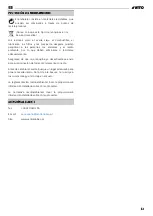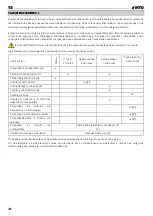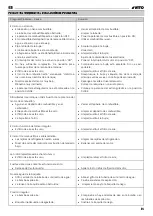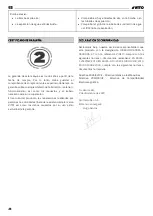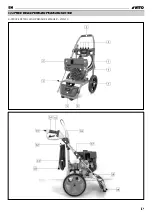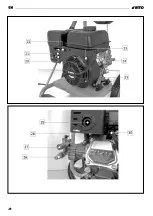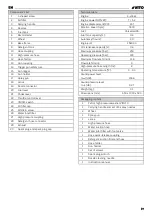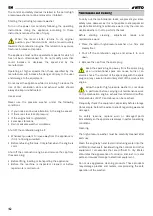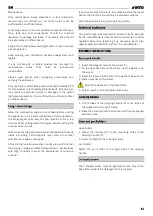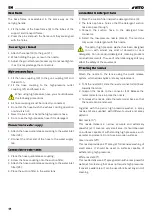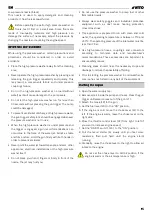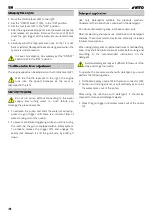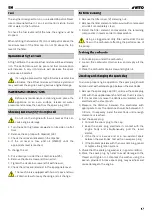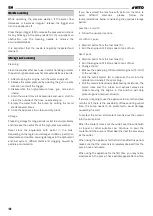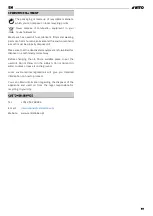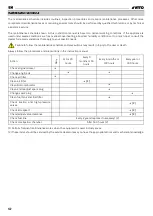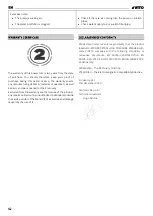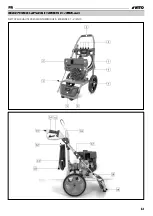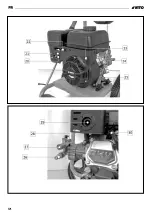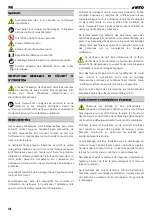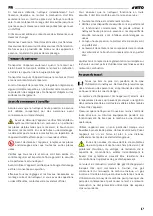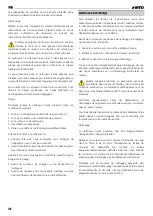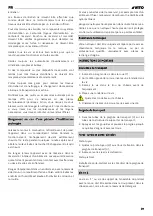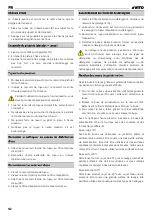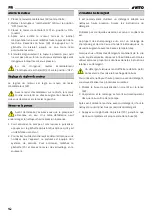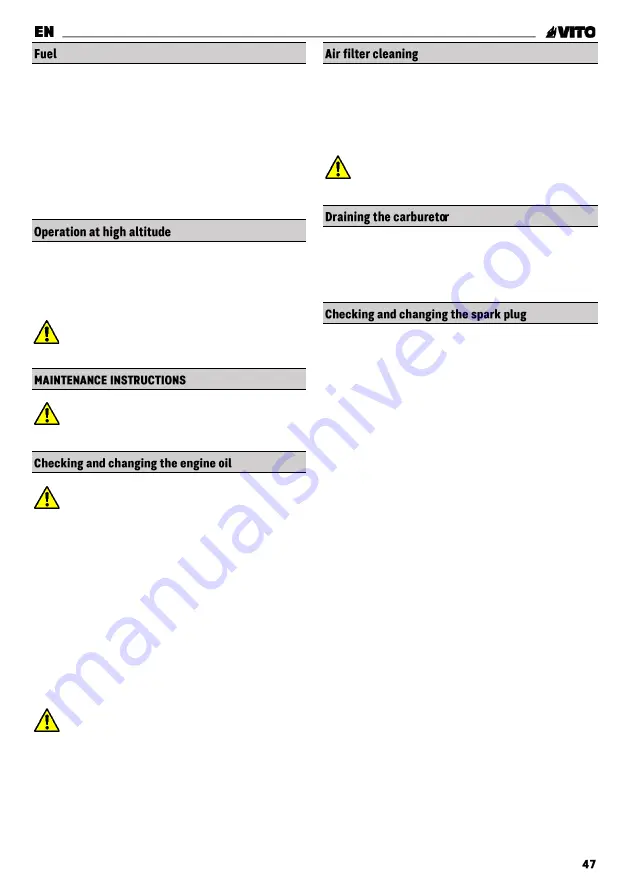
The engine is designed to run on unleaded 95 petrol. Never
use contaminated fuel or an oil and petrol mixture. Avoid
dirt or water in the fuel tank.
To check the fuel level and fill the tank, the engine must be
stopped.
When refilling the fuel tank (5), do not add petrol above the
maximum level of the filler cap. Do not fill above the top
level of the filter.
At high altitude, the usual air/fuel mixture will be extremely
rich. The performance will be poor and fuel consumption
will increase. A very rich mixture will decrease the spark
and cause a bad start.
If an engine prepared for high altitudes is used at low
altitudes, the air/fuel mixture will reduce yield and
may overheat the engine causing serious engine damage.
Before any maintenance or cleaning work, place the
appliance on an even surface, release all water
pressure and remove the cap from the spark plug (30).
Do not run the engine with low oil level as this can
cause engine damage.
1.
Turn the petrol high pressure washer on its side, on a flat
floor;
2.
Remove the cap (cap with dipstick) (24);
3.
Check the oil level indicated on the dipstick;
4.
If the oil level is low, add oil (15W40) until the
appropriate level is reached;
To change the oil:
5.
Put a drain pan under the oil drain screw (25);
6.
Remove the drain screw and drain all oil;
7.
Tighten the oil drain screw and fill with new oil;
8.
Check the oil level and adjust to the appropriate level.
The machine is equipped with two oil caps and two
oil drain screws for easy checking and oil change.
1.
Remove the filter cover (2) and wing nut;
2.
Remove the filter element and blow out with compressed
air until it is completely clean;
3.
Install the filter element and assemble the remaining
components in reverse order to disassemble.
Using a clogged and dirty filter will restrict the air
flow in the carburetor affecting the performance of
the pump.
1.
Put a drain pan under the carburetor;
2.
Loosen the carburetor drain screw and empty all the
petrol;
3.
Place the carburetor drain screw and tighten it.
To ensure proper engine operation, the spark plug should
be clean and with adequate gap between the electrodes.
1.
Remove the spark plug cap (30), unscrew the spark plug
(30) with the supplied wrench and check that it is clean;
2.
If it is not clean, remove the debris accumulated on the
electrode with a steel brush;
3.
Measure the distance between the electrodes with
appropriate tools. The distance should be between 0.7-
0.8 mm. If necessary, bend the electrode until enough
clearance is reached;
4.
Test the spark plug:
▪
Connect the spark plug to the cap;
▪
Keep the spark plug electrode in contact with the
engine body and simultaneously pull the recoil
starter;
▪
If the there is a weak and or a non-existent spark
between the electrodes, test with a new spark plug;
▪
If the problem persists with the new spark plug, repair
or replace the ignition system.
5.
Check that the spark plug washer is in good condition;
6.
Place the spark plug by hand to avoid damage to the
thread and tighten to compress the washer using the
wrench provided. A loose spark plug may overheat and
cause damage to the engine.
Summary of Contents for VIML70
Page 5: ...MOTOLAVADORA A GASOLINA 4T VIML70 ...
Page 6: ......
Page 21: ...HIDROLIMPIADORA A GASOLINA 4T VIML70 ...
Page 22: ......
Page 37: ...4 STROKE PETROL HIGH PRESSURE WASHER VIML70 ...
Page 38: ......
Page 53: ...NETTOYEUR HAUTE PRESSION THERMIQUE À ESSENCE 4T VIML70 ...
Page 54: ......
Page 70: ......
Page 71: ......
Page 72: ...VIML70_REV02_MAR22 ...

